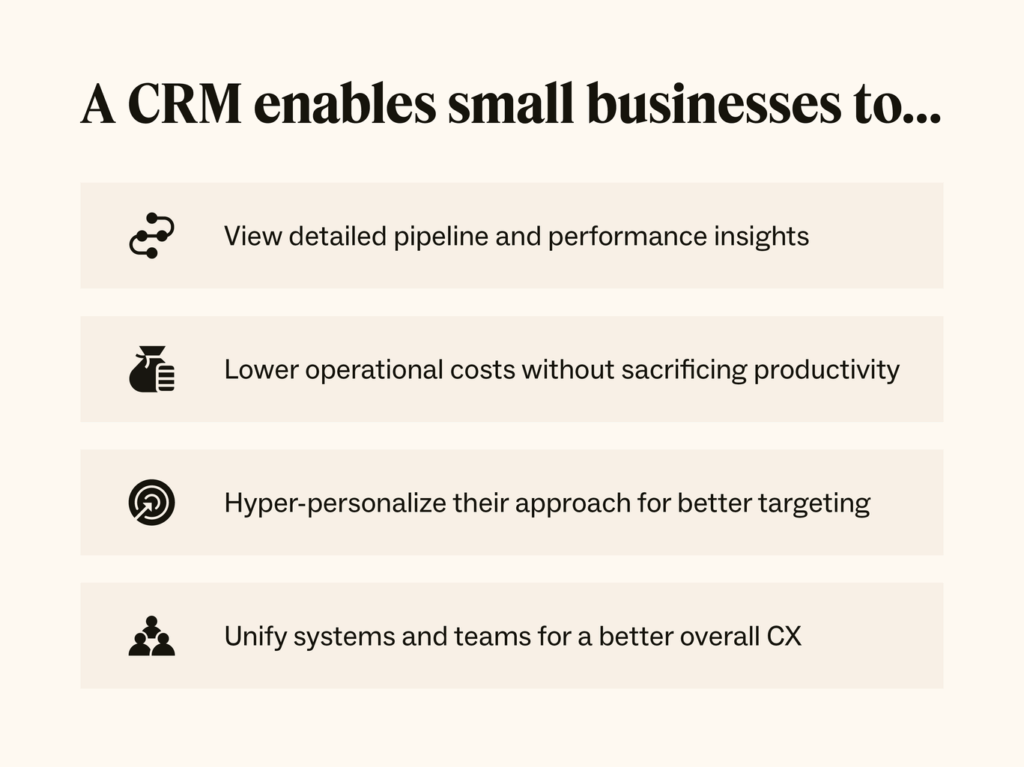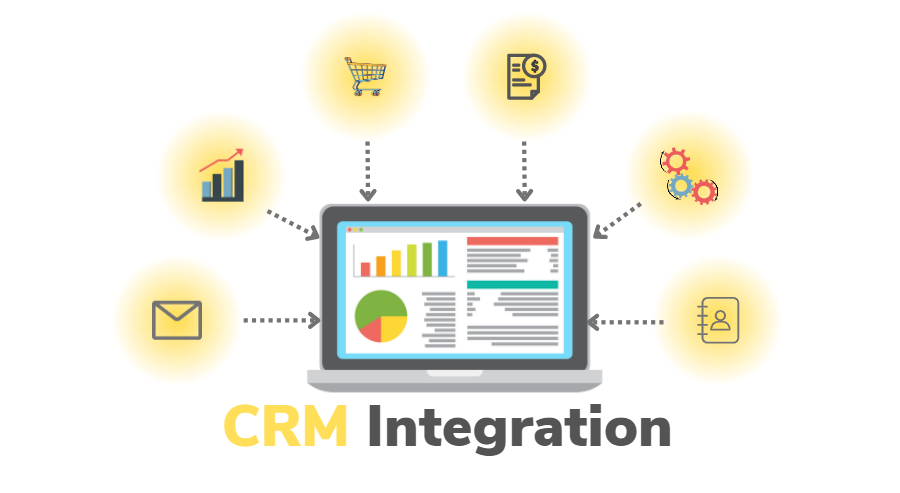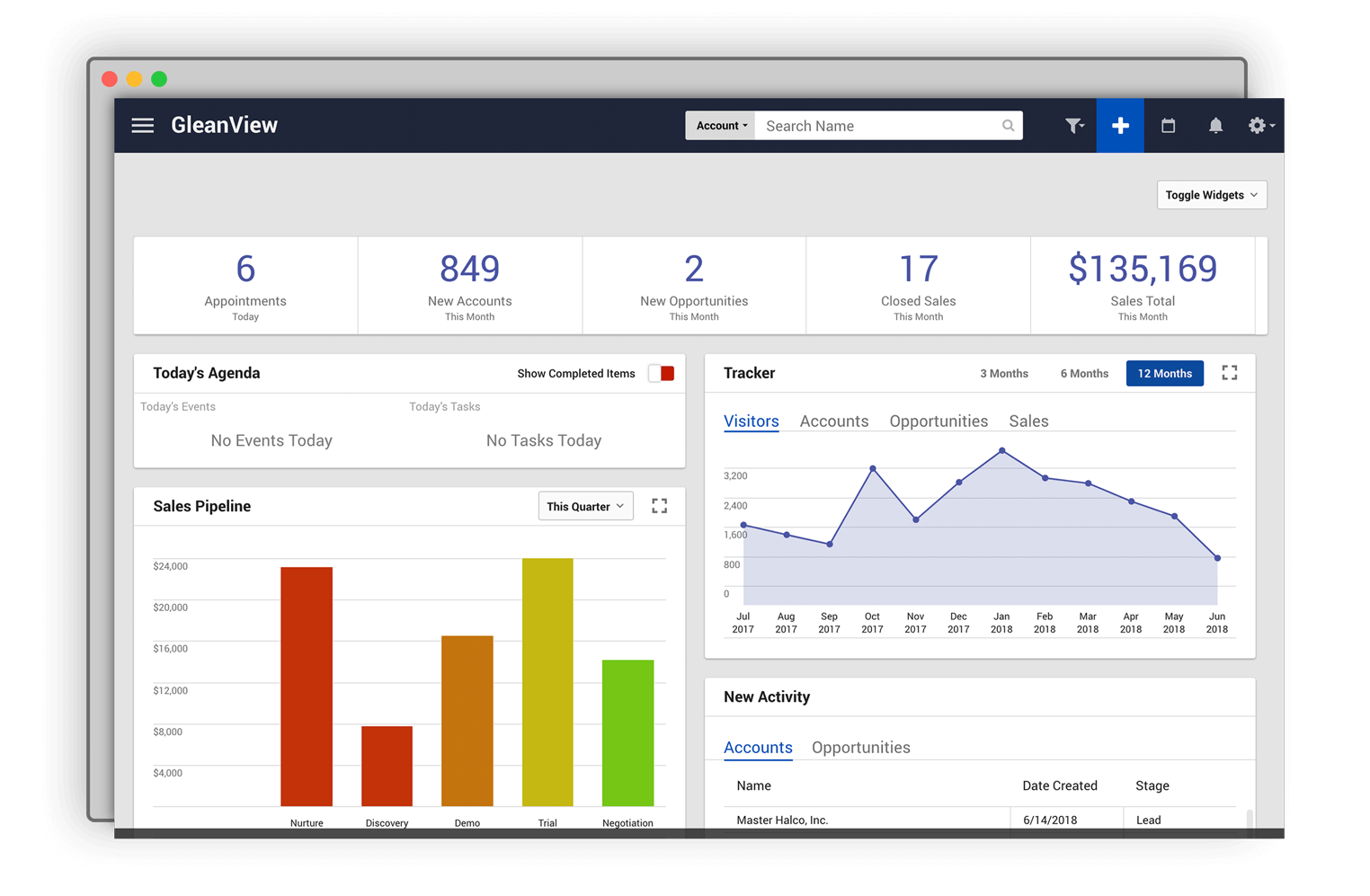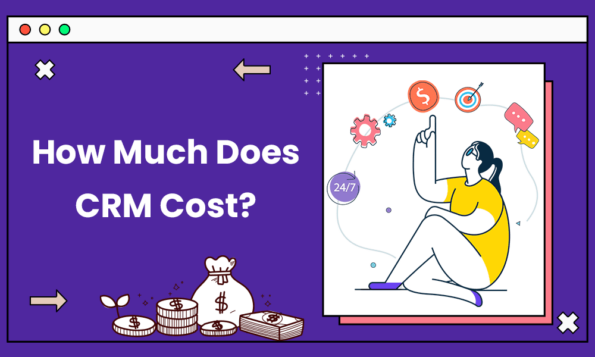
Introduction: Small Business, Big Dreams, and the CRM Secret
Running a small business is a rollercoaster. One minute you’re celebrating a win, the next you’re wrestling with a problem. You wear multiple hats, juggle countless tasks, and constantly strive to do more with less. In this whirlwind, efficiency is your superpower. And that’s where Customer Relationship Management (CRM) software steps in. It’s not just for the big guys; CRM is a game-changer for small businesses, leveling the playing field and helping you achieve your big dreams.
This article delves into the world of CRM, specifically tailored for small businesses. We’ll explore what CRM is, why it’s crucial, and how it can revolutionize your operations. We’ll uncover the key features to look for, the benefits you can expect, and the steps to take to implement CRM successfully. Get ready to transform your business from chaotic to streamlined, from reactive to proactive, and from struggling to thriving.
What is CRM and Why Does Your Small Business Need It?
CRM, or Customer Relationship Management, is more than just software; it’s a strategy. It’s a holistic approach to managing all your interactions with current and potential customers. Think of it as a central hub where you store, organize, and analyze all customer-related information. This includes contact details, communication history, purchase history, preferences, and more.
Why is this important? Because in today’s competitive landscape, customer experience is everything. Customers expect personalized interactions, quick responses, and a smooth, seamless journey. CRM empowers you to deliver on these expectations. It allows you to:
- Centralize Customer Data: No more scattered spreadsheets or lost sticky notes. CRM brings all your customer information into one accessible location.
- Improve Communication: Track all interactions, ensuring everyone on your team is on the same page.
- Personalize Interactions: Understand your customers’ needs and tailor your communication accordingly.
- Boost Sales: Identify leads, nurture relationships, and close deals more effectively.
- Enhance Customer Service: Provide faster, more efficient support, leading to happier customers.
- Increase Efficiency: Automate repetitive tasks, freeing up your time to focus on strategic initiatives.
In essence, CRM helps you build stronger relationships with your customers, which leads to increased loyalty, higher revenue, and sustainable growth. For a small business, these benefits are invaluable.
Key Features to Look for in a CRM System for Small Businesses
Choosing the right CRM system can feel overwhelming, given the plethora of options available. However, focusing on essential features will help you narrow down your choices and select the system that best fits your needs. Here are the key features to prioritize:
1. Contact Management
This is the foundation of any CRM system. It allows you to store and manage all your customer contact information, including names, addresses, phone numbers, email addresses, and social media profiles. Look for features like:
- Easy Data Entry: The system should be intuitive and allow for quick and easy data input.
- Data Segmentation: The ability to categorize contacts based on various criteria (e.g., industry, location, purchase history) is crucial for targeted marketing and sales efforts.
- Duplicate Detection: The system should identify and merge duplicate records to maintain data accuracy.
- Import/Export Capabilities: Seamless integration with existing spreadsheets or other data sources is essential.
2. Sales Automation
Sales automation streamlines your sales process, freeing up your sales team to focus on closing deals. Key features include:
- Lead Management: Track leads from initial contact to conversion.
- Sales Pipeline Management: Visualize your sales process and track the progress of each deal.
- Automated Tasks: Automate repetitive tasks such as sending follow-up emails, scheduling appointments, and creating tasks.
- Reporting and Analytics: Gain insights into your sales performance with detailed reports and dashboards.
3. Marketing Automation
Marketing automation helps you engage with your audience, nurture leads, and drive conversions. Look for features such as:
- Email Marketing: Create and send targeted email campaigns.
- Lead Nurturing: Automate email sequences to nurture leads through the sales funnel.
- Segmentation: Segment your audience based on demographics, behavior, and other criteria.
- Social Media Integration: Connect with your audience on social media platforms.
4. Customer Service and Support
Providing excellent customer service is critical for building loyalty and retaining customers. Key features include:
- Ticket Management: Track and manage customer support requests.
- Knowledge Base: Create a self-service knowledge base to answer common customer questions.
- Live Chat: Offer real-time support through live chat functionality.
- Feedback Management: Collect and analyze customer feedback to improve your products and services.
5. Integrations
The ability to integrate with other business tools is essential for maximizing efficiency. Look for integrations with:
- Email Marketing Platforms: (e.g., Mailchimp, Constant Contact)
- Accounting Software: (e.g., QuickBooks, Xero)
- Project Management Tools: (e.g., Asana, Trello)
- Social Media Platforms: (e.g., Facebook, Twitter, LinkedIn)
6. Mobile Accessibility
In today’s mobile-first world, it’s crucial to have access to your CRM data on the go. Choose a system with a mobile app or a responsive web design that works seamlessly on smartphones and tablets.
7. Reporting and Analytics
Data is your most valuable asset. The ability to generate reports and analyze key metrics is crucial for making informed decisions. Look for features like:
- Customizable Dashboards: Visualize your key performance indicators (KPIs) at a glance.
- Pre-built Reports: Access a library of pre-built reports for common metrics.
- Data Exporting: Easily export your data for further analysis.
The Tangible Benefits: How CRM Impacts Your Bottom Line
Investing in a CRM system is an investment in your business’s future. The benefits extend far beyond simply organizing customer data. Here’s a look at the tangible ways CRM can positively impact your bottom line:
1. Increased Sales and Revenue
CRM helps you identify and nurture leads more effectively, leading to a higher conversion rate. By understanding your customers’ needs and preferences, you can tailor your sales efforts and close deals faster. Sales automation features streamline your sales process, allowing your team to focus on selling, not administrative tasks. Studies show that businesses using CRM experience a significant increase in sales revenue.
2. Improved Customer Retention
Happy customers are repeat customers. CRM helps you build stronger relationships with your customers by providing personalized experiences, proactive communication, and exceptional customer service. By tracking customer interactions and addressing their needs promptly, you can increase customer loyalty and reduce churn. Retaining existing customers is often more cost-effective than acquiring new ones.
3. Enhanced Customer Satisfaction
CRM empowers you to provide exceptional customer service. With all customer information readily available, your team can resolve issues quickly and efficiently. Personalized interactions and proactive communication make customers feel valued and appreciated. This leads to higher customer satisfaction scores and positive word-of-mouth referrals.
4. Streamlined Operations and Increased Efficiency
CRM automates repetitive tasks, such as data entry, email marketing, and appointment scheduling, freeing up your team’s time to focus on more strategic initiatives. Centralized data eliminates the need for manual data searching and reduces the risk of errors. This leads to improved productivity and reduced operational costs.
5. Data-Driven Decision Making
CRM provides valuable insights into your customers’ behavior, preferences, and purchase patterns. This data allows you to make informed decisions about your marketing campaigns, product development, and sales strategies. By analyzing key metrics, you can identify areas for improvement and optimize your business processes for maximum efficiency.
6. Improved Collaboration and Communication
CRM fosters better collaboration and communication among your team members. With all customer information accessible in one central location, everyone is on the same page. This eliminates confusion, reduces errors, and improves the overall customer experience.
Choosing the Right CRM for Your Small Business: A Step-by-Step Guide
Selecting the right CRM system is a crucial decision. Here’s a step-by-step guide to help you navigate the process:
1. Define Your Needs and Goals
Before you start evaluating CRM systems, take the time to define your specific needs and goals. What are your biggest pain points? What do you want to achieve with CRM? Consider the following questions:
- What are your sales goals? (e.g., increase leads, improve conversion rates)
- What are your marketing goals? (e.g., generate more leads, improve customer engagement)
- What are your customer service goals? (e.g., improve response times, increase customer satisfaction)
- What features are essential for your business? (e.g., contact management, sales automation, email marketing)
- What integrations do you need? (e.g., email marketing, accounting software)
Answering these questions will help you create a clear picture of your requirements and guide your decision-making process.
2. Research and Evaluate CRM Systems
Once you’ve defined your needs and goals, it’s time to research and evaluate different CRM systems. There are numerous options available, so it’s important to narrow down your choices based on your specific requirements. Consider the following factors:
- Features: Does the system offer the features you need?
- Ease of Use: Is the system user-friendly and intuitive?
- Scalability: Can the system grow with your business?
- Pricing: Does the pricing fit your budget?
- Integrations: Does the system integrate with your existing tools?
- Customer Support: Does the vendor offer adequate customer support?
- Reviews and Ratings: Read reviews and ratings from other users.
Create a shortlist of potential CRM systems and compare them side-by-side.
3. Consider Pricing and Implementation Costs
CRM systems come in a variety of pricing models, including:
- Subscription-based: Pay a monthly or annual fee per user.
- Free/Freemium: Offer basic features for free and charge for premium features.
- One-time purchase: Pay a one-time fee for the software.
Consider your budget and choose a pricing model that fits your needs. Also, factor in implementation costs, which may include data migration, training, and customization.
4. Sign Up for Free Trials or Demos
Most CRM vendors offer free trials or demos. Take advantage of these opportunities to test the system and see if it’s a good fit for your business. During the trial or demo, pay attention to the following:
- User Interface: Is the interface intuitive and easy to navigate?
- Features: Do the features meet your needs?
- Performance: Does the system perform smoothly?
- Customer Support: Is the customer support responsive and helpful?
The trial period is your chance to experience the CRM firsthand and determine if it’s the right choice.
5. Plan Your Implementation
Once you’ve chosen a CRM system, it’s time to plan your implementation. This involves the following steps:
- Data Migration: Migrate your existing customer data from spreadsheets or other sources into the new CRM system.
- Customization: Customize the system to fit your specific needs.
- Training: Train your team on how to use the system.
- Testing: Test the system to ensure it’s working properly.
- Go-Live: Launch the system and start using it.
A well-planned implementation will ensure a smooth transition and maximize the benefits of your CRM system.
Tips for Successful CRM Implementation and Adoption
Implementing a CRM system is only the first step. To ensure its success, you need to focus on user adoption and ongoing optimization. Here are some tips:
1. Involve Your Team
Involve your team in the selection and implementation process. Get their feedback and address their concerns. This will increase their buy-in and make them more likely to use the system.
2. Provide Training and Support
Provide comprehensive training and ongoing support to your team. Offer training sessions, create user guides, and be available to answer questions. This will help your team become proficient in using the system and maximize its benefits.
3. Customize the System to Your Needs
Don’t try to fit your business into the CRM system. Customize the system to fit your specific needs. This includes configuring fields, creating custom reports, and integrating with your existing tools.
4. Start Small and Scale Gradually
Don’t try to implement everything at once. Start with the essential features and gradually add more features as your team becomes comfortable with the system. This will minimize disruption and ensure a smoother transition.
5. Monitor and Optimize
Regularly monitor your CRM system’s performance and make adjustments as needed. Analyze your data, identify areas for improvement, and optimize your processes. This will ensure that your CRM system continues to meet your evolving needs.
6. Foster a Data-Driven Culture
Encourage your team to use the CRM system to track and analyze data. Use the data to make informed decisions and improve your business processes. This will help you unlock the full potential of your CRM system.
CRM Systems for Small Businesses: Popular Choices and Their Strengths
Several CRM systems cater specifically to the needs of small businesses. Here’s a look at some popular choices and their strengths:
1. HubSpot CRM
HubSpot CRM is a popular choice for small businesses due to its user-friendly interface, free version, and comprehensive features. Its strengths include:
- Free Forever Plan: Offers a robust free plan with essential features.
- Ease of Use: Intuitive interface and easy to learn.
- Marketing Automation: Strong marketing automation capabilities.
- Sales Automation: Excellent sales automation features.
- Integrations: Integrates with numerous other tools.
2. Zoho CRM
Zoho CRM is a versatile and affordable option for small businesses. Its strengths include:
- Affordable Pricing: Offers various pricing plans to suit different budgets.
- Customization Options: Highly customizable to fit specific business needs.
- Automation: Robust automation features.
- Integrations: Integrates with Zoho’s suite of business apps.
3. Freshsales
Freshsales is a sales-focused CRM that’s ideal for small businesses looking to streamline their sales process. Its strengths include:
- Sales-Focused: Designed specifically for sales teams.
- Built-in Phone and Email: Offers built-in phone and email capabilities.
- AI-Powered: Uses AI to automate tasks and provide insights.
- User-Friendly: Easy to set up and use.
4. Pipedrive
Pipedrive is a visual and intuitive CRM that’s designed to help sales teams manage their pipelines effectively. Its strengths include:
- Visual Pipeline: Offers a clear and visual sales pipeline.
- User-Friendly: Easy to use and navigate.
- Automation: Automates repetitive tasks.
- Focus on Sales: Specifically designed for sales teams.
5. Capsule CRM
Capsule CRM is a simple and user-friendly CRM that’s ideal for small businesses looking for a straightforward solution. Its strengths include:
- Simplicity: Easy to set up and use.
- Contact Management: Excellent contact management features.
- Task Management: Helps you manage tasks and stay organized.
- Affordable Pricing: Offers affordable pricing plans.
When selecting a CRM, carefully evaluate your specific needs and goals. Consider the features, pricing, ease of use, and integrations offered by each system. Take advantage of free trials or demos to experience the system firsthand.
Conclusion: Embracing CRM for a More Efficient and Successful Small Business
CRM is no longer a luxury; it’s a necessity for small businesses that want to thrive in today’s competitive market. By centralizing customer data, automating tasks, and providing personalized experiences, CRM empowers you to build stronger relationships with your customers, increase sales, and improve efficiency.
Implementing CRM may seem daunting, but the benefits far outweigh the challenges. By following the steps outlined in this article – defining your needs, researching and evaluating systems, planning your implementation, and fostering user adoption – you can successfully transform your business with CRM. Embrace the power of CRM and watch your small business flourish.
The journey of entrepreneurship is challenging, but with the right tools and strategies, you can navigate the complexities and achieve your dreams. CRM is one such tool, a powerful ally that can help you unlock efficiency, build strong customer relationships, and achieve sustainable growth. So, take the leap, explore the possibilities, and embrace the future of your small business with CRM.


